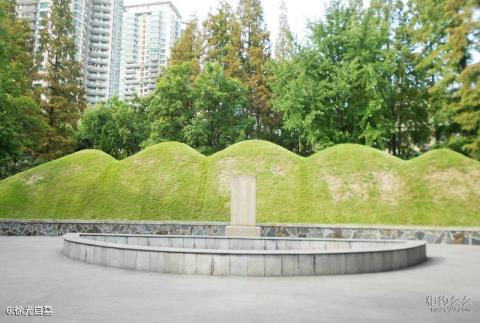
Introduction to Xu Guangqi's Tomb: Xu Guangqi's tomb covers an area of 300 square meters and is 2.2 meters high. It is a large oval tomb. The tombstone is "Ming Xu Guangqi's Tomb" handwritten by mathematician Su Buqing. In the fourteenth year of Chongzhen (1641), Xu Guangqi was buried in Shanghai. There are ten graves in the cemetery, and Xu Guangqi, his wife Wu, and his four grandchildren are buried there. A village formed near the cemetery, later called Xujiahui. In the 29th year of Guangxu (1903), the Catholic Vicariate of Jiangnan rebuilt the cemetery on the occasion of the 300th anniversary of Xu Guangqi's baptism. In 1933, the 300th anniversary of Xu Guangqi's death, the cemetery was renovated. During the Anti-Japanese War, the cemetery was abandoned and turned into a vegetable patch. In 1957, the Shanghai Municipal Bureau of Culture renovated the tomb of Xu Guangqi, rebuilt the cross base, and listed it as a cultural relic protection unit in Shanghai. During the "Cultural Revolution", the memorial archway and Chinese watches in the cemetery were destroyed. In 1978, the cemetery was reorganized into Nandan Park, and a series of memorials were built since then. In 1983, the 350th anniversary of Xu Guangqi's death, Nandan Park was renamed Guangqi Park. In 1988, Xu Guangqi's tomb was listed as a national key cultural relic protection unit by the State Council of the People's Republic of China. In December 2003, the restoration project of Xu Guangqi's tomb was completed and the tomb structure of 1903 was restored.
